It’s possible we’ve taken our passion for native trout a bit too far. Not that North America’s native fish should be held in disdain. Far from it.
In putting the notion of Manifest Destiny into practice — first by identifying it as the inevitable future for European Americans in the mid-1800s and then by actively pursuing it as an ideal — our predecessors doomed more than just the Indigenous people of our continent.
With all due respect to North America’s indigenous people, many of whose progeny remain confined to “reservations” (yes, we still use that shameful term) and still suffer the apartheid conditions that resulted from westward expansion by European Americans, the continent’s wildlife, too, has suffered.
The last grizzly bear in Colorado was shot and killed by a bowhunter in 1979 in the wild country of the San Juan National Forest. Utah’s last griz was trapped and shot in Logan Canyon by a southern Idaho trapper in 1929. Today, the Optimus Prime of North American predators, not unlike the continent’s indigenous people, is confined to carefully managed “reservations” where, even now, should it venture across tenuous political boundaries, it stands just as good a chance of being shot and killed as its ancestors did a century ago.
That these reservations are now called national parks, national wildlife refuges, national monuments or national forests is immaterial. Tolerance for top-tier predators is minimal, particularly by those who displaced Indigenous Americans and set about using the wild country of the West to raise livestock, funnel water from rivers to grow crops or pull minerals from the ground to fuel expansion.
And the grizzly isn’t alone. The American bison is perhaps the poster child when it comes to acceptable trade-offs. Crop yields, domesticated livestock and simple development are still more important to land managers than intact wildlife habitat. The same is true for the West Coast’s salmon, which were deemed less important than cheap timber, cheap hydropower and the desire to turn arid landscapes into lush and productive farmland or pastures for a completely different kind of protein. Therefore, they were allowed to dwindle and, in many cases, wink out altogether.
Development is an absolutist’s game. There’s no middle ground.
The trout story is different
But the country’s native trout? For some reason, that’s a different story, one not necessarily tied to the physical forces of Manifest Destiny. Rather, the plight of North America’s native trout is simply one of misguided preference — a product of the arrogance of westward expansion. This trout over that trout, for whatever reason.
We can blame ignorance. Given the infancy of fisheries science a century and a half ago, and the emphasis put on propagation rather than conservation, it made sense, at the time, to radically change the state of the trout fishery in the West. For an example, look no further than our country’s largest grizzly bear reservation — Yellowstone National Park.
U.S. Army Capt. Frazier Boutelle, who was given the charge of managing Yellowstone in 1888 in the absence of a formal management agency (which would later become the National Park Service under the Department of Interior), would take one look at the state of the park’s fishery and immediately set about to change it.
“I hope to see all of these waters so stocked that the pleasure-seeker in the Park can enjoy fine fishing within a few rods of any hotel or camp,” he’s quoted as saying.
We can blame the “pleasure-seeker” for the demise of westslope cutthroat trout and Arctic grayling in the lower Firehole and Gibbon rivers, which come together to form the storied Madison. When Boutelle gave voice to his fateful desires, both native fish thrived from the base of Firehole Falls and Gibbon Falls all the way down the Madison to where it met with the Jefferson and the Gallatin, and beyond.
Not anymore.
Replaced in the blink of an eye
Part of the blame lies with the grayling, at least according to W.C. Kendall who, as an assistant with the U.S. Bureau of Fisheries had this to say about Yellowstone’s willing native fish in a 1914 report:
“It takes the artificial fly eagerly, and if missed at the first cast will rise again and again from the depths of the pool, whereas the trout will seldom rise a second time without a rest.”
Manifest Destiny wins again. Within 12 years of Boutelle’s decree, grayling were gone from the Gallatin. By 1935, the native fish were completely gone from the park. Today, the once-fishless upper reaches of the Firehole and the Gibbon are now home to brown trout of Scottish and German lineage, brookies from Appalachia and rainbows that likely originated in the McCloud River in California.
In the far upper reaches of the Gibbon, above Virginia Cascade, the Park Service continues to try and bring back the native cutthroats and grayling. But remember, these fish aren’t native, either. The meanders of the upper Gibbon, when Boutelle took charge of the park and its trout, were fishless. The effort to “reintroduce” the native fish to this small pocket of good habitat is a Hail Mary, and the results are far from certain.
In southern Montana, fisheries managers with the state and the U.S. Forest Service are working to rid Buffalo Creek of introduced rainbows that are threatening the genetic integrity of Yellowstone cutthroat trout in the fabled Slough Creek drainage. The plan? Poison the non-native rainbows and replace them non-native Yellowstone cutthroat. Much like the upper Gibbon, upper Buffalo Creek, before the arrival of European Americans, was fishless. But Buffalo Creek offers excellent habitat and sits at an elevation where it will remain dependably cold. It’s also had trout in it for a century.
The practice of displacing or replacing native trout repeated itself all over the West, and it hasn’t really stopped. To this day, fisheries managers in Idaho introduce hatchery rainbows into the upper reaches of the Big Lost River, where, before the product of Manifest Destiny arrived in the Gem State, only the lowly mountain whitefish was native. To this day, the theory that “this fish is better than that fish” prevails. Or, in more politically correct terms, the river is managed with anglers in mind.
We all but lost our indigenous Gila and Apache trout of the southwest, and some western cutthroat trout subspecies are officially extinct. Thanks to the introduction of brookies, browns and rainbows, native fish are mostly gone from the southern Rockies of New Mexico to the desert peaks of northwest Nevada. Brook trout from Appalachia have polluted remote drainages throughout the West, where they literally eat themselves out of habitat. Once revered, they’re now abhorred by trout anglers for their lack of size and the fact that they show up just about anywhere a small-stream angler might like to go to find sizable fish.
And for what? The preference of anglers more than a century ago? The desire to catch the brown trout their ancestors left behind to start a new life on a new continent, or the deep-seeded desire to make the trout water of the West look a lot like the trout water of the East?
It doesn’t really matter now. The damage has been done. It’s where we go from here that matters.
Is it too late? Probably.
It’s time to embrace wild trout. Wherever they swim. Whatever their pedigree. Theirs is not a tale of total loss, like it is with the bison or the grizzly bear. But, like the bison and the griz, trout, too, will one day be confined to reservations and restricted by climatic forces that are already taking hold.
Are there places where certain wild trout (or char, as is the case with brook trout and lake trout) just don’t belong? Certainly. Exotic lake trout in Yellowstone Lake have already devastated the lake’s native Yellowstone cutthroat trout once. If, for some reason, the National Park Service were to lose the funding needed to continually net lakers from the depths of this high-elevation freshwater sea, the non-native char will likely take over again.
Brook trout? Brookies have done more damage to native trout and char in the West than we can likely quantify. They outcompete cutthroats, hybridize with bull trout and generally turn once-cherished native trout waters into streams full of dinks.
It’s what they do. And we enabled them. In all but a few drainages where native trout hang on, and where we have the opportunity to try and recreate a native population out of heritage strains of cutthroats, Gilas, Apaches, goldens or redbands, brookies will persist.
On the whole, it’s likely too late to aggressively and meaningfully try and displace non-native, yet naturalized fish that swim in most western waters. The best we can do, in an effort to protect or propagate native trout, is to craft pockets of acceptable habitat and do our best to remove the non-native fish from these — and only these — little oases. And, save for large-scale efforts, like those ongoing on Yellowstone Lake, these smaller projects will have to do.
We’ve already reached a tipping point
Why? Because all trout habitat is in peril, and in certain reaches of once perfectly healthy native trout water, the future is grim.
A 13-year-old study has proven to be prophetic. Crafted in 2011 by fisheries biologists Seth Wenger and Kurt Fausch, the study predicted that wild trout in the West would decline by 50 percent within 70 years thanks largely to a changing climate and our often-stubborn refusal to help our watersheds adapt.
Since the study was published, we’ve seen marked declines in wild trout populations in places like southwest Montana’s Big Hole river basin, where low stream flows thanks to heavily allocated water for agriculture are coupling with record summer heat and making the river uninhabitable to trout.
We’ve seen parasites that wild trout might normally shrug off kill fish in rivers like the Yellowstone; blue-green algae outbreaks degrading trophy waters like Henry’s Lake and the Henry’s Fork; and we’ve seen record floods, exacerbated droughts and ballooning air and water temperatures.
Since the study came out, all five of the planet's hottest years on record have occurred. It’s begun. The troubling slog toward a less trouty future is under way.
And attentive anglers know it.
In the fall of 2022, legendary angler and Orvis lifer Tom Rosenbauer spoke at the annual School of Trout event conducted on the Henry’s Fork in eastern Idaho. Around a bonfire one night, with the event’s students gathered around and listening, Rosenbauer shared some sobering thoughts.
“If you’ve been coming to Montana and Idaho for 20 years, 30 years or 40 years, you know the climate is different. Rivers are getting warmer,” he said. “We’re going to lose some trout streams. If things keep up, we’re going to be limited to fishing below tailwaters where water comes out of a dam, and we’re going to be limited to high-mountain streams. The freestone, non-tailwater streams that go through the valleys? We’re going to lose some of those.”
What does the future hold?
In the Yellowstone River as it flows out of Yellowstone National Park and north toward Livingston, smallmouth bass are now present. No, they may not be plentiful — not yet. In July of last year, the first recorded catch of a smallie happened on Montana’s Bitterroot River. That same river has seen catches of largemouth bass in years past, and the Bitterroot has hosted non-native northern pike for decades.
Predictably, Montana Fish, Wildlife and Parks put in place an emergency order demanding anglers keep all smallmouth bass caught in the lower Bitterroot and turn them over to the state for analysis. Truth be told, short of nuking the lower Bitterroot, there’s not much fisheries managers can do to stave off the coming invasion of bass.
Both largemouth and smallmouth bass are considered warm-water fish, although smallies are certainly more tolerant of colder water. Pike are legit cool-water predators, and as the Bitterroot continues to get warmer with every record-breaking summer, the numbers of exotic fish will rise and the native westslope cutthroats and bull trout will lose habitat.
On the Yellowstone, the discovery of smallmouth bass on the fringes of the border with Yellowstone National park is an ominous event. Smallies have been in the Yellowstone for years — they’re very common in the lower reaches, well below Livingston, where the river braids out through a cottonwood forest and winds its way east toward Billings. And, you guessed it, they’re there because we put them there. Because fishing in rivers like the Tongue, Bighorn and the lower Yellowstone just wasn’t good enough in the 1960s.
But in the trout water? Right on the cusp of America’s first national park? Realists in the fisheries game might not give voice to what this means, but there are some who will readily acknowledge that this is likely the beginning of the end for wild trout in the Yellowstone north of the park boundary. The river is already becoming less hospitable to wild and native trout, and the replacement fish — the adaptable smallmouth bass — is waiting in the wings.
Can they be stopped? Probably not. And any efforts to try will be expensive. The Wenger/Fausch study suggests that any conservation work on the Yellowstone or other iconic Western rivers suffering from the effects of climate change will only delay the inevitable.
Truth be told, we couldn’t have fouled up Western trout fisheries more effectively had we actually sought to do it. Our ignorance and our arrogance 140 years ago, coupled with our disdain for the natural function of rivers led us to this point. Now, with a climate that’s becoming less and less friendly to coldwater fish, the outcome is all but certain.
“This research also builds on 15 years of work with graduate students at [Colorado State University] to find ways to prevent our native cutthroat trout from going extinct in the face of declining habitat and nonnative trout invasions,” Fausch wrote in his study in 2011.
“It’s exciting to see these ideas being used, but the impending loss of trout habitat is both startling and depressing,” he wrote. “The West is iconic for trout fishing, but much of this is projected to go away.”
This fish, that fish … no fish?
It is time to stop palpitating over which trout belong where and start ensuring functional rivers have the resiliency needed to withstand a climate that’s not going to get any friendlier to coldwater fish.
Terms like “minimum stream flows” and “connectivity” should replace worries over which flavor of trout swims in Rattlesnake Creek and why it ought to be removed and replaced. The days of fighting those little battles should be over. The effort now should focus on the plumbing of the West and how we can make sure enough water flows down the Big Hole to keep any of its trout alive, let alone its rare natives (it’s the last Missouri River Basin tributary that still has a population of native grayling, by the way).
In other drainages, emphasis should be on ensuring fish — any fish — can move throughout the system in order to migrate during spawning season or to allow them to seek out thermal relief when valley-floor temperatures hit 100 degrees and rivers that used to be dependably cold just aren’t anymore. This means that unsexy conservation projects like ensuring adequate streamflow, culvert replacements and dam removals need to become a primary focus of fisheries managers.
Chris Hunt is an award-winning journalist and the author of “Catching Yellowstone’s Wild Trout and co-author of the “Little Black Book of Fly Fishing.” He splits his time between eastern Idaho and northern Florida.




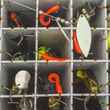
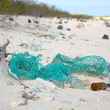



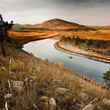





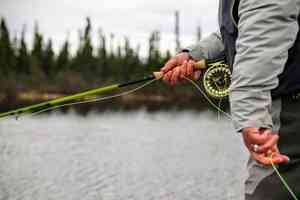



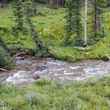



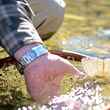





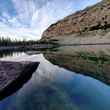
Comments
Jack Donachy replied on Permalink
I'm with you on this, Chris. I'll add - enough already with blowing up beaver dams to "improve" trout habitat. From the manicured, toxified biological deserts called "lawns" to trout streams and salmon rivers, more of a "let it grow/let it be" management approach would better serve wildlife. Yes, replace culverts, remove dams... and Imagine the plight of a warbler returning to nest along a stream its forebears have nested along for millennia... only to discover that in the name of extirpating an "unwanted" species of trout, rotenone has wiped out the local insect population necessary to successful rear a brood of chicks. Everything is connected to everything. Trout anglers need to do a better job recognizing that.
DSmith replied on Permalink
But, of course, rotenone doesn’t “wipe out” insect populations and the approach of simply ignoring invasive spp as a key contributor is ignoring a key factor that got us here in the first place. Lazy human nature always wants a simple “silver bullet” solution without the cost, work and necessary sacrifices it actually takes to enable real change.
Jackson Sammons replied on Permalink
The old rotenone kills every living thing in its path canard is tiresome and wrong. Read the section on effects on invertebrates in the Buffalo Creek environmental assessment, or any of the EAs prepared by agencies. Some invertebrates get knocked down to about half their pretreatment abundance. Some do just fine. Within a couple weeks tons of bugs, including gangbuster reproduction by the more sensitive invertebrates. Within a year, greater diversity, richness, and biomass than before treatment. Facts matter, and the scientific review is inarguable.
Tom wiensch replied on Permalink
The author if this article, who is associated with TU, really misses the boat. Can he really believe that we are faced with a binary choice between preserving native species where we can, and tolerating/enjoying non-natives where we can’t?!? Why can’t we do both? I remember when TU was all about conserving native trout. I was concerned when TU leader Kirk Deeter broadcast a screed against native species, denigrating grayling recovery efforts in Michigan, and announcing that species moved by man are not invasive (what?!?). I was disappointed when TU adopted a flaccid policy on public access (maybe to appease rich donors?). Now a doubling down on bashing native species work? It seems as though TU may now be more about preserving TU than anything else.
Chad Shmukler replied on Permalink
tom wiensch replied on Permalink
Is the Chris Hunt who wrote this not the Chris Hunt of TU??
https://kenlockwood.tu.org/users/chrishunt
Chad Shmukler replied on Permalink
Luke A replied on Permalink
I like this sentiment. I love brook trout and I am not afraid to say it. Too many streams in Utah have been poisoned for cutthroat restoration only to prove to have flows that are too warm and inconsistent for native trout to survive. I love native trout but more than that I love wild trout. Let us not lose viable, reproducing trout populations without being sure that they can be replaced. Diverse recreational fishing opportunities are perhaps the most attractive thing to a freshwater angler. The costly and lengthy removal of non-natives should not be taken lightly.
Tom Waite replied on Permalink
The best example of fixing the plumbing here in the East was the Gunpowder River. It was once a put and take river until a court action required a uniform flow rate from a up stream dam . The stream and its natural ability to repair itself now provides a wonderful example of what can be done. It may have taken 35 years to provide a " proof of concept " but is a shining example of how fixing the plumbing makes eminently good sense.
Thanks for a great article.
Edward Williams replied on Permalink
It grieves me to see the byline of one of my favorite trout writers under this ignorant, in-your-face title. I hope that Hunt didn’t hatch or okay this invitation to back off on advocacy for our gravely imperiled native trout.
The text itself wanders aimlessly between good points about native trout, irrelevant points about humans and other mammals, a dangerous and incorrect assertion that it’s “too late” to rescue native trout from competition, predation and hybridization by non-natives, and an incomprehensible reference to the plan to render Buffalo Creek a vital thermal and genetic refuge for Yellowstone cutthroat endangered in fact if not by federal decree.
The statement that “upper Buffalo Creek, before the arrival of European Americans, was fishless” is both irrelevant and almost certainly incorrect. And are we expected to embrace the soon-to-be-eradicated alien rainbows and mongrels currently polluting the stream even though they lack a “pedigree”?
This from Lolo National Forest district ranger, Quinn Carver, responding to similar statements from Wilderness Watch and the Native Fish Coalition -- both of which oppose the Buffalo Creek project, arguably the most important native-fish recovery project in the U.S.: “To say fish were never there is a pretty arrogant statement. Did they walk the earth with woolly mammoths?”
And here’s the response of Carol Endicott who recently retired as Monana’s Yellowstone cutthroat biologist: “They [Wilderness Watch and the Native Fish Coalition] are free to make their own operational definition of ‘historically fishless,’ but their definition is at odds with our legal responsibility. It ignores the concept of metapopulation dynamics where waters open and become blocked over time. I know of beaver dams that have blocked fish movement for hundreds of years. Then they go away and fish move in. Same with waterfalls, especially those sitting in the world’s largest super volcano. Under policy required by law, historically fishless waters are within the historic range, and we can legally put fish in them if they don’t harm other species. They coevolved with everything up there. The current barriers that block fish don’t block invertebrates and amphibians. They easily fly, drift, or hop past these features. No harm, only benefit.”
Chad Shmukler replied on Permalink
"I hope that Hunt didn’t hatch or okay this invitation to back off on advocacy for our gravely imperiled native trout."
Except this isn't the message. Hunt clearly states that native fish restoration projects should persist where and when they make sense, and that many are vital. But his overarching message, as I read it, is that an excessive focus on native fish restoration vs. coldwater habitat preservation misses the forest for the trees.
As I've stated elsewhere, several folks have commented that native species preservation and coldwater habitat preservation aren't mutually exclusive. And that's true. But Hunt didn't suggest they were. However, I did take away the message that failing to preserve coldwater habitat would be exclusive of native species preservation. If we don't preserve coldwater habitat it won't make one damned bit of difference how many places we tuck away Gila trout and fine-spotted cutthroat trout and Apache trout and so on.
Gary Foster replied on Permalink
He lost me at the opening of the article. The bad white man poor Indian thing was totally unnecessary and irrelevant. I was starting to get interested in the magazine but no more. This nonsense is destructive and alienating. To what end is this even here? To help us understand fish?
Jerry Kustich replied on Permalink
You have got to be kidding, Gary. How any "white man" can be offended by what they have objectively done in the name of progress is beyond me. Your blinders are exactly how we got to this point.
Brian Hines replied on Permalink
What’s needed also is restoration of our riparian forests and floodplains to cool the waters with shade, restore habitat and sequester carbon. Too expensive? 2023 was the hottest year on record and climate change caused $92.9 billion in damages from extreme weather. Why do our policymakers ignore that side of the ledger? Externalized costs are so annoying. Let’s just pretend they don’t exist said the economist who works for the consultants, who work for the agency, that works for the legislature, that works for the development interests.
tom wiensch replied on Permalink
The mere mention of the Native American Genocide triggers you? Too bad for you.
Jerry Kustich replied on Permalink
Excellent assessment by the author. Years ago I would write similar articles when living in Montana, but all outlets didn't want to discomfort their reader base with such depressing pieces. Like a slow moving train going off the track, we have seen the decline of many fisheries throughout the country, but the deniers will continue to deny until there is nothing left.
Frank Shaw replied on Permalink
I have to agree with the commenter above who stated that it doesn't have to be an "either/or" situation. We should absolutely aggressively work to restore and protect trout habitat to the maximum extent possible. Once that has happened on a stretch of water a scientific assessment should be conducted to determine the efficacy of restoring native species by removing introduced species. If possible, native species should be reintroduced by removing introduces species. My home waters within the Adirondacks has been making slow progress with that by restocking native species in ponds within designated wilderness areas that have been reclaimed to eliminate introduced species like golden shiners. It is also my ardent hope that anglers will be able to let go of identity politics to read follow the science that so clearly informs about the real threats posed by climate change and habitat destruction. Regardless of the best and expensive efforts of developers and fossil fuel interests, the science is clear and the empirical evidence is becoming more evident, and irrefutable, every year. The greed to enrich a current generation should not threaten the inheritance of future generations. One man's opinion.
Scott replied on Permalink
To lump in Native Americans and reservations, who by the way, are not confined to live their lives on reservations. I believe the term we use today is Tribal Land. If the author is so passed with Europeans in North America, he should be the first to pack up go back. Keep the leftist social politics out of fisheries and environmental management so that we ALL can work together to get it right. Thank you.
Kerry replied on Permalink
I appreciate the discussion points and multiple arguments on the theme. For me, in the sense that the biosphere is changing, and not for the benefit of trout habitat, I believe in Action 3 (native trout restoration and habitat protection being 1 and 2). Action 3 is calling a spade a spade with regard to the politics of climate change, and raising awareness among the fishing public respectively. It means pissing people off, if necessary. Because the people who vote for the people who are killing our planet are killing our trout. In addition to other things I care about, of course. I'm guessing I'll piss off the commenter who doesn't like pejorative remarks about white men, but then I'm totally out of ****s to give.
Jeffry Gottfried replied on Permalink
I find this essay so incredibly depressing and defeatist in its look back on the importance of native fish. The author, this publication and the entire dismal state of fish and wildlife in N America, in my considered opinion comes from viewing fish as commodities, a means and wonderful motivation for selling things and making money and not seen as living beings that are intricately interwoven into a particular environment.
Even organizations like Trout Unlimited, who panders to rich fat-cat Republicans, who largely fund them, is nowhere to be seen at the table supporting actions that can fight climate change. Like TU, the "fishing industry," as represented by the author would rather sell stuff to anglers than take care of nature, so that it can take care of us. TU and their ilk care more about the siz)e of the fish that they catch than the species of fish and their evolutionary place in nature.
This week, I learned that the cancer that I have been battling has gotten the upper hand a my time walking on the surface of this beautiful planet will soon come to an end. I want to thank the author for presenting good arguments for my giving up living on what has become a totally altered , depauperate Earth, land, full of plastic-clad anglers fishing plastic/petroleum gear for plastic fish! Bye all!
TC Thompson replied on Permalink
The opening of the article was so misinformed it was almost insulting. Natives are not "Confined" to reservations. They are free to leave and travel anywhere with full citizens rights. Ironically their "Reservation" is a sovereign land under their own governance so the evil "white man" cant control them. Next, your diatribe about climate alarmism is frankly expected but woefully lacking relevant information. Eco warriors like yourselves rely on fear porn to enact your socialist policies while ignoring that accurate weather information only is reliable back 150ish years. We are two degrees Celsius cooler than we were 100,000 years ago. Montana had the second snowiest winter in history 5 years ago. I really wish the editors of this publication would take the politics out of what they allow. It diminishes actual helpful information in regards to fishing. Go write for eco warrior quarterly, youll find a more receptive audience.
Jackson Sammons replied on Permalink
Please cite your sources on climate. Your data are not consistent with the large body of evidence presented by climate scientists.
TC Thompson replied on Permalink
The 2 degrees was begrudgingly admitted as fact by John Kerry when Thomas Massie informed the public of that inconvenient fact in a congressional hearing. The snowiest winter comment is available from google for south central Montana. https://www.extremeweatherwatch.com/cities/billings/snowiest-winter-season
Jackson Sammons replied on Permalink
John Kerry is not a scientist and what you reported is hearsay as you report it. Here’s what NASA reports on global temperatures. https://climate.nasa.gov/
A snowy winter is weather, not climate. Montana’s snowpack this year is pitiful and temperatures are warm. The climate trend for Montana and much of the Intermountain West considers climate over 30 year periods, as a single year can be an outlier. On average, winter temperatures in Montana have been much milder, more precipitation falls as rain instead of the snowpack that feeds late season flows, and conditions in most years are drier. Cherry picking a colder and wetter year while ignoring longer term trends is an exercise in examining weather, not climate. Climate scientists have reached consensus that the planet is warming and humans are driving it. The consensus grew from 97% to 100% of climate scientists recently.
TC replied on Permalink
100% consensus? Thats not science thats propaganda. Ill give you 90% even but 100%??? Stop being disingenuous. Glad to know youll give up your car, your heat, your refrigeration, and anything else deemed needed in the global battle against climate.
Jackson Sammons replied on Permalink
Here’s a link to a peer reviewed journal article showing the scientific consensus among climate scientists has reached 100%. https://journals.sagepub.com/doi/10.1177/0270467619886266
Science, not propaganda. You don’t even understand Milancovich cycles, otherwise you would not have thrown out that red herring argument of warmer temperatures during am interglacial.
What branch of science is your expertise in? Mine is climate and conservation in face of climate change. My carbon footprint isn’t zero because the technology is not there yet, but I I continually find ways to reduce it.
TC Thompson replied on Permalink
Im going to regret keeping this going but what the heck. Dude if you really have a degree in what you claim you must be pretty thick to think anything has 100% consensus. You know what else has 100% consensus? Jesus divinity amongst Christians yet somehow you probably dont prescribe to that consensus. 100% consensus is orthodoxy not science. Also why wont you be honest about the eco warrior goals? They want people to live in 15 minute cities without cars while food is rationed by the govt based off your social credit scores. They hate people who use lead ammo but love Taylor Swift and John Kerry who fly private to save the world. Unless your policy positions include the invasion and conquering of China and India you should never be taken seriously in climate science. Those two countries alone are "killing the planet" and you all say nothing. They gave China 3rd world status while attempting to bankrupt the US with unrealistic climate goals that wont address the problem. If you really believe the propaganda you spew you're not a patriot, you're a communist ushering in a new world order ran by the climate conscious gender fluid elite. No thanks.
Jackson Sammons replied on Permalink
Did you read the article? Seems like you neither check facts nor have expertise. Bye.
Jackson Sammons replied on Permalink
When you can’t broker in facts,science le civil discourse, attack Taylor Swift. Still haven’t seen her publish science, and I have somehow missed her music. Maybe I should give her a listen to see why she bunches undies.
TC Thompson replied on Permalink
I am brokering in facts. Youre the one misleading on what the ultimate outcome of your climate dream is. We will not eat the bugs. If you want socialism or communism why dont you move to China.
TC Thompson replied on Permalink
Did you see the Nobel prize winning scientist in physics John Clauster has authored a declaration declaring "climate change" as bogus based on bad modeling. Signed on by 1690 other scientists. So much for 100% conformity huh? I mean a nobel prize winner, they just give those away right?
https://www.washingtonpost.com/climate-environment/2023/11/16/john-claus...
Edward Williams replied on Permalink
The vast majority of climate scientists (roughly 99 percent) warn that global warming will have catastrophic consequences for current and future generations. But Clauser (not "Clauster") is not a climate scientist. He’s just an octogenarian contrarian. He’s never even published a peer-reviewed paper on climate change. He won the prize for his 1972 work on quantum entanglement.
TC Thompson replied on Permalink
But Jackson said 100%. Now you move to question the achievements of actual scientist because they disagree with your world view. Typical partisan political crap
Jackson Sammons replied on Permalink
If the poster had read the article, he would have noticed that Clauster has never published peer reviewed research in climate science, is not a climate scientist, and the top climate scientists responding to his contrarianism give him a collective and massive eye roll. Skepticism and holding contrarian views are not the same thing. Skeptics go by evidence. Contrarians go by dogma.
Autocorrect does not like the “t” in Clauster, hence misspellings.
Jackson Sammons replied on Permalink
Clauser is a quantum physicist, not a climate scientist. His assumptions on clouds affecting climate are disprovable, and he has been roundly criticized. My comments are limited to climate scientists. Why a quantum physicist stepped out side his area of expertise to deny the consensus to a church group is unknown to me. I could just as invalidly talk to my church group and claim quantum particles don’t exist. He joined a fringe group that denies climate change and spoke about it at a religious gathering. That’s not doing science. He has not published his “theories” on clouds, and his conclusions are laughable as clouds are water vapor that have short residency in the atmosphere before turning preciptating. I’m not an atmospheric scientist, but Really, you need to do better than that when you’re debating actual scientists. He’s not part of the consensus view as he’s not a climate scientist. Your gotcha is wrong.
Jackson Sammons replied on Permalink
Also, cyclical warming on roughly 150,000 intervals is driven by Milancovich cycles, a wobble I the earth’s orbit that raised temperatures for a few millennia before returning to the Ice Age - in other words, warm interglacials occurred regularly during the 2.5 million year Ice Age, then the climate would swing back to a glacial period. The difference is that these natural cycles occurred over many millennia, not a few decades like our current warming. Cutthroat trout lived through over 20 Milancovich cycles and survived considerable warming. The difference is the extreme rapidity of the current warming and the indisputable science pointing to human causation.
James Smith replied on Permalink
Thank you, Mr. Hunt. I agree with just about everything you have articulated here. It is long overdue to have some commonsense offered up on this discussion. Thank you for doing so in fine fashion.
Ted Williams replied on Permalink
My 2 cents: https://midcurrent.com/conservation/restoring-native-trout-we-havent-tak...
Pages